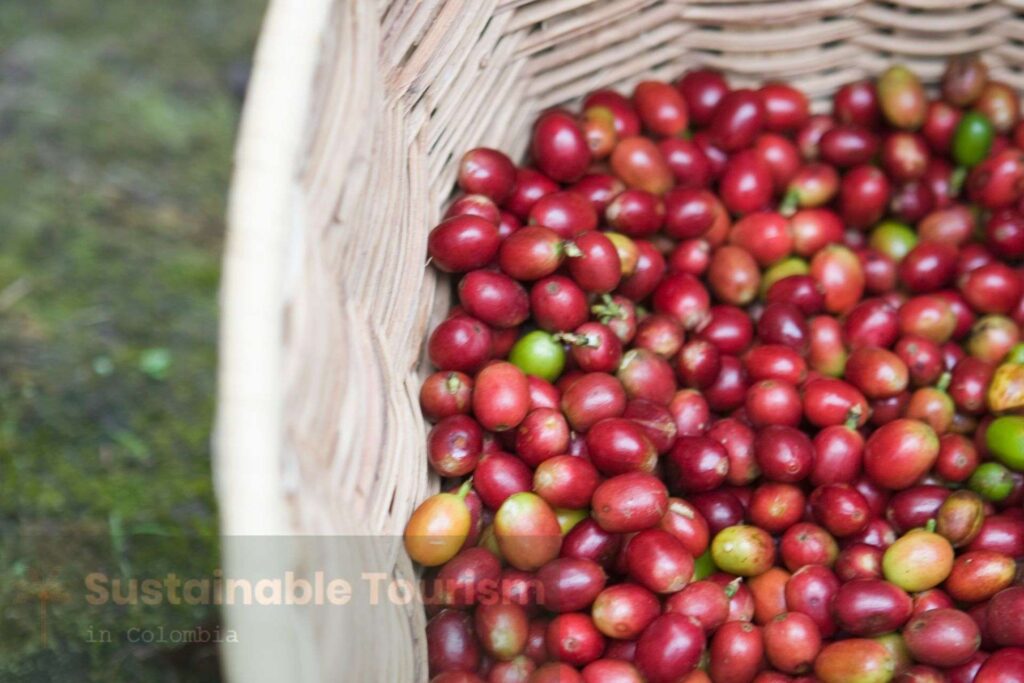The Coffee Triangle region of Colombia is famous for its rich coffee culture and stunning scenery. This post could explore the history of coffee in Colombia, the process of growing and harvesting beans, and some of the unique cultural traditions associated with coffee farming.
Colombia is known for producing some of the world’s best coffee, and a visit to the country’s Coffee Triangle is a must for any coffee lover. Located in the heart of the Andes Mountains, the region is home to three departments: Caldas, Quindío, and Risaralda. It’s here that the coffee industry has thrived for over a century, and where you can learn about the history and culture of coffee in Colombia.
Table of Contents
ToggleHistory

Coffee production in Colombia began in the late 18th century, when Jesuit priests introduced the crop to the country. By the mid-19th century, coffee had become a major export for Colombia, and it remains one of the country’s most important industries today.
The Coffee Triangle began to emerge as a coffee-growing region in the early 20th century, when farmers from other parts of the country began to move to the area. They were drawn to the region’s fertile soil and perfect climate for growing coffee. Over time, coffee cultivation became the main economic activity in the region, and the Coffee Triangle was born.
Culture
The culture of the Coffee Triangle is deeply tied to coffee production. Coffee farms, or fincas, dot the landscape, and coffee is an integral part of daily life for many people in the region. The people of the Coffee Triangle take great pride in their coffee, and many believe that the region’s unique combination of soil, altitude, and climate is what makes Colombian coffee so special.
Visitors to the Coffee Triangle can experience the region’s coffee culture firsthand by visiting one of the many coffee farms in the area. You can take a tour of the farm, learn about the coffee-making process from seed to cup, and even participate in a coffee tasting. You’ll also get a glimpse into the daily life of the people who work on the farm.
In addition to coffee, the region is also known for its beautiful landscapes and cultural heritage. The colonial towns of Salento and Filandia are popular destinations, with their brightly colored buildings and traditional architecture. The Cocora Valley, located in the heart of the Coffee Triangle, is home to the world’s tallest palm trees and offers breathtaking views of the surrounding mountains.
History Culture Coffee Triangle
The region is also known for its cultural heritage. The colonial towns of Salento and Filandia are popular destinations, with their brightly colored buildings and traditional architecture. Visitors can also explore the Cocora Valley, home to the world’s tallest palm trees, and hike through the stunning landscapes of Los Nevados National Park.
The Coffee Cultural Landscape is a must-visit destination for anyone interested in coffee culture, history, and natural beauty. It offers a unique opportunity to experience the history and culture of coffee production in Colombia, while also exploring some of the most beautiful landscapes in the world. Whether you’re a coffee lover or just looking for an adventure, the Coffee Cultural Landscape is sure to be a trip you’ll never forget.
Discovering the Coffee Cultural Landscape of Colombia.
Colombia is a country that is steeped in coffee culture, and nowhere is this more evident than in the Coffee Cultural Landscape. This region, which spans the departments of Caldas, Quindío, and Risaralda, is home to some of the most breathtaking landscapes in the world, and has been designated a UNESCO World Heritage site for its cultural and natural importance.
The Coffee Cultural Landscape declared as World Heritage
The World Heritage Committee of the United Nations Educational, Scientific and Cultural Organization – UNESCO, inscribed the Coffee Cultural Landscape on the World Heritage List on June 25, 2011. This recognition commits the Colombian State, to the international, national and local community to its protection, but it is also an opportunity for its inhabitants and visitors to get to know the landscape and participate in its preservation.

The Coffee Cultural Landscape is an area of over 1 million hectares that is dedicated to coffee cultivation, and is one of the largest coffee-growing regions in the world. The region’s history dates back to the late 18th century, when Jesuit priests introduced coffee to the country. Since then, coffee has become an integral part of Colombian culture, and the Coffee Cultural Landscape has become a hub for coffee production and tourism.
One of the main attractions of the Coffee Cultural Landscape is its stunning landscapes. The region is characterized by rolling hills, lush forests, and picturesque towns that have remained largely unchanged for centuries. Visitors can explore the region’s many coffee farms, or fincas, and learn about the history of coffee production in Colombia. Many of the fincas offer tours and tastings, and visitors can see the entire process of coffee production, from planting to harvesting.


Recent Comments